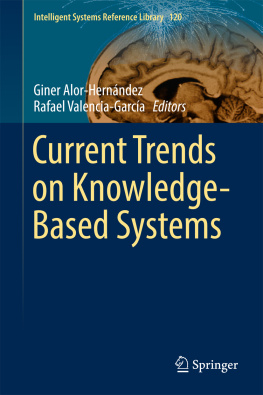1.1 Introduction
The Internet of Things (IoT) refers to the pervasive presence around us of a variety of things or objects such as Radio-Frequency Identification (RFID), sensors, actuators, mobile phones, which, through unique addressing schemes, are able to interact with each other and cooperate with their neighboring smart components to reach common goals [].
Nowadays, the interaction with home appliances is mainly done through user interfaces based on mechanical buttons, knobs, and more recently, touch sense based buttons. These interfaces only allow users to turn on, turn off, or programming the corresponding device, thus limiting the functionalities that a device can provide, e.g., warnings, fault indication, the cooperation among them, and even, the actuation from remote locations. In this sense, the IoT offers the potential of endless opportunities for new applications and services in the home context that enable users to access and control the home environment, from local and remote locations, in order to carry out daily life activities in an easy way. All that previously mentioned improves the quality of life of the user while at the same time enabling energy efficiency. Despite these advantages, the large range of IoT devices and smart appliances often results to complex systems-of-systems interactions [], it is imperative to provide users with a system that allows them to monitor and control the home environment, from local and remote locations in an easy and intuitive way. Regarding this fact, in this work we present an IoT-based system, known as im4Things, that enables users to control home appliances of different makes, models, and manufacturers, from local and remote locations by means of instant messages based on natural language. The im4Things system combines current technologies such as mobile applications, Natural Language Processing (NLP), Cloud computing, Semantic Web, and Raspberry Pi, an open-source platform used for building electronics projects.
Taking into account that a smart home control system should be affordable, scalable so that new devices can be easily integrated into the system, and it should be user-friendly [], to mention but a few. Third, the need for smart things with proactive behavior, context awareness, and collaborative communications capabilities. In this regard, the im4Thing system provides a low-cost smart item, called im4Things bot, equipped with wireless communication, sensors, memory and elaboration capabilities. Thanks to these features, the im4Things bot not only receives data from home appliances and commands from application platform but also transmits data to the application platform, thus becoming in a generator and receiver of information.
The remainder of the paper is structured as follows. Section presents the evaluation results concerning the effectiveness of the present approach to control home appliances by means of written natural language instructions. Finally, conclusions and future work are presented.
1.2 Related Works
Recently, new approaches for home appliances control have been proposed, many of them targeted at the idea of providing speech-controlled home automation. The DIRHA (Distant-speech Interaction for Robust Home Applications) [] understanding component. In order to generate answers to the users, Mayordomo makes use of a set of patterns containing information such as home appliance, room, status, among others.
There are some approaches that allow home appliances controlling via the Internet, either e-mail or a Web application. In [] protocol, which enables very simple electronics devices the communication over the Internet. This system enables the user to query and control several devices through the Web. For this, the system provides a Web interface with a set of predefined functions, each of which is triggered through a button element.
On the other hand, there are systems focused on home appliances control by means of mobile applications. For instance, in [] the authors presented a smart switch control system. This system provides a GUI implemented using Web technologies but packed as native applications. Also, it implements a SOC (System on a Chip) power metering chip through which the switching operation over saving lamps, air conditioners, refrigerators, and microwaves is performed.
Despite that the above-presented works have made a significant contribution to the smart home field, they present certain disadvantages that are addressed by our approach. First, works such as [] is performed through the recognition of small key phrases, predefined voice commands, and through an e-mail message whose subject contains the keyword ON/OFF followed by a number, respectively. This fact can be tedious and complicated for end-users due to the need to learn a set of phrases or keywords. In this sense, the present approach provides an instant messaging application through which the users can interact with the home environment through natural language, thus avoiding the need to learn new commands. Also, as was previously mentioned, the natural language paradigm is generally deemed to be the most intuitive from a usage point of view. Besides, the im4Things system provides a conversational agent aiming to interact with the user through natural language, thus enhancing the user experience. Finally, it should be mentioned that the implemented conversational agent exploits the use of ontologies in order to address one of the main limits of this technology, the rigidness of the dialogue mechanism. All above-mentioned features are described in detail in next section.











